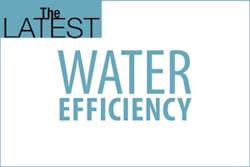State Water Board Seeks Comment on Draft Science Report for Sacramento River and Delta Flow Requirements
State Water Resources Control Board staff today released a working draft Scientific Basis Report (Report) for fisheries and flows in the Sacramento River and Bay-Delta. The Report is the next step in the State Water Board’s update of the Bay-Delta Water Quality Control Plan.
The draft Report identifies the science that will be relied on in considering potential changes to the Bay-Delta Plan to enhance flows in and out of the Sacramento River basin and within the Bay-Delta to protect fish and wildlife beneficial uses. The Report also acknowledges that non-flow measures should be integrated with flows to protect fish and wildlife.
The Report is a comprehensive synthesis of the best available science on the flow needs of fish and other aquatic species in the Sacramento River basin and the Bay-Delta as well as an analysis of how flows have been modified in the system due to diversions of water.
This Report is the second phase of the plan update. The first phase, released on Sept. 15, recommended increased flows to the lower San Joaquin River and its tributaries and salinity objectives for the southern Delta. It followed earlier scientific work done for those areas several years ago.
There will be a workshop and opportunity for public comment on the Report. There will also be a review by the Delta Independent Science Board and a final draft document will be developed. That final document will then be submitted for independent peer review. An environmental document that analyzes possible effects of modified requirements for fish and wildlife protection on other beneficial uses of water, including alternatives and economic impacts, will also be developed as part of the process and will accompany any proposed changes to the plan later next year.
Highlights of the Report:
The Report documents the decline of several Delta fish and other aquatic species, including spring-run and winter-run Chinook salmon; longfin smelt, Delta smelt and Sacramento splittail. It looks at stressors in the ecosystem that affect fish populations, including loss of habitat, invasive species, water pollution, and reduced flows.
The Report also documents how flows in the Sacramento and Delta eastside tributaries have been significantly modified; tributaries with reservoirs generally have reduced winter and spring flows; tributaries without large reservoirs generally have low, warm flows particularly in the summer.
Greater quantities of Delta outflow are needed during the winter and spring to support estuarine processes, habitat, and the species that depend upon them.
The average annual Delta outflow is reduced by approximately 48 percent compared to unimpaired conditions, according to the Report. The number of juvenile salmon migrating out of the Delta in spring increases with increased flow, according to the Report; and increased Delta outflow improves populations of species that live within the estuary.
The Report recommends improving habitat and providing flows that support native species and not non-native fish. That includes more natural timing, distribution and variability of flows. A range of tributary inflows of from 35 percent to 75 percent of unimpaired flow is analyzed in the Report.
The effects of reverse flows in Old and Middle rivers in the interior Delta, caused by the state and federal water project pumps in the southern Delta are also considered. The reverse flows confuse the migratory signals that fish follow, and trap fish at the southern Delta pumps. The Report includes recommendations to consider new reverse Old and Middle flow and export limits for the protection of salmonids, Delta smelt and longfin smelt.
A fact sheet further describing the report can be found: http://www.waterboards.ca.gov/waterrights/water_issues/programs/bay_delta/comp_review.shtml
The State Water Board is seeking input on the draft Report and welcomes comments and other relevant scientific studies or information that may be available.
The full Scientific Basis Report can be read here: http://www.waterboards.ca.gov/waterrights/water_issues/programs/bay_delta/comp_review.shtml
Public comment can be submitted in writing by Dec. 16 and a public workshop will be scheduled for Dec. 7. This phase of plan preparation is in its early stages and there will be several additional opportunities for public participation and comment as the planning process moves forward.
The State Water Board also encourages the ongoing efforts of various stakeholders to develop voluntary agreements that would implement updated Bay-Delta Plan objectives. Early voluntary agreements on both phases of the plan can help inform and expedite environmental review and implementation of the water quality objectives and provide durable solutions in the Delta watershed.
A web page with information on the Bay-Delta Plan update can be found here: http://www.waterboards.ca.gov/waterrights/water_issues/programs/bay_delta/
Details on the draft Phase 1 update proposal and how to comment are here: http://www.waterboards.ca.gov/waterrights/water_issues/programs/bay_delta/bay_delta_plan/water_quality_control_planning/index.shtml
